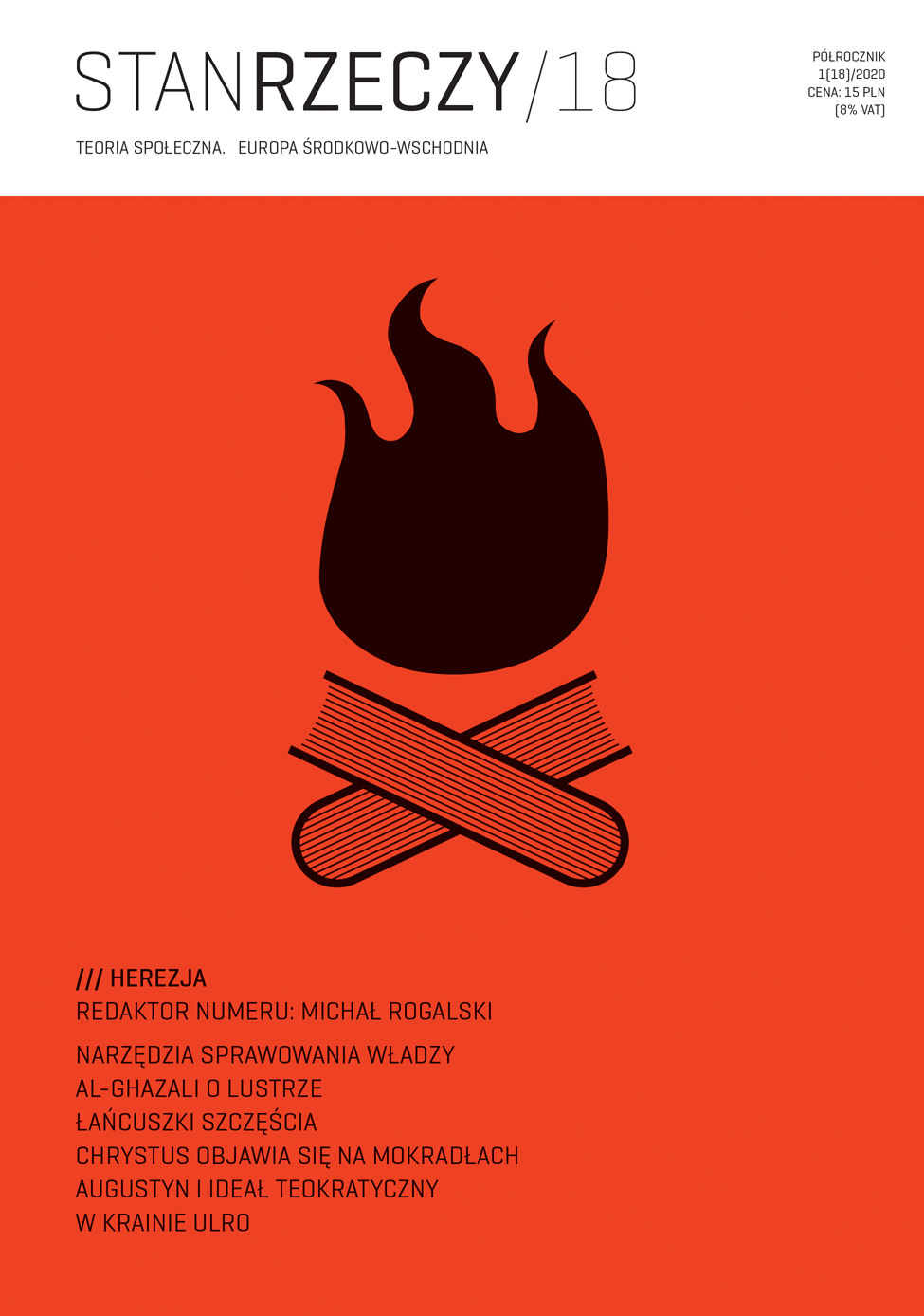
We kindly inform you that, as long as the subject affiliation of our 300.000+ articles is in progress, you might get unsufficient or no results on your third level or second level search. In this case, please broaden your search criteria.

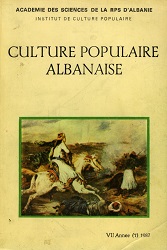
C’est à notre honneur national que dans la vie et l’oeuvre de K. Marx, se trouvent ses opinions qui s’attachent à l’Albanie et du monde albanais. Bien qu’elles soient secondaires dans son riche héritage, il faut les connaître et les étudier.
More...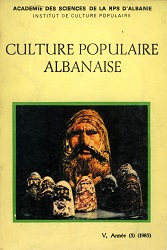
Le fait qu’on conserve encore, en tant qu’une tradition épique du pays, le cycle des preux dans la contrée montagneuse au nord du fleuve Drin, de Hot, Kuç et Pipër à l’ouest et jusqu’à Kosove à l’est, n’est pas fortuit. Cela est dû à une série de traits particuliers du développement économique, social et politique de ces régions, durant la période du Moyen-Age par rapport aux autres régions voisines.
More...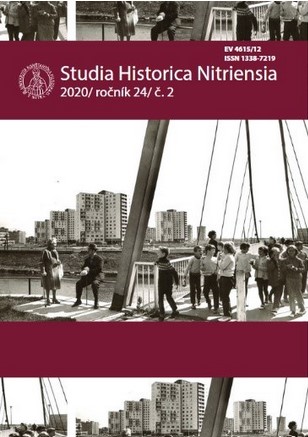
Review of: Pavel Otmar Krafl - VACULÍK, Jaroslav, Miroslaw PIWOWARCZYK, Anna HARATYK and Petr KALETA. Češi a Poláci na Ukrajině ve 20. století. Czesi i Polacy na Ukrainie w XX wieku (Czechs and Poles in Ukraine in the 20th Century). 1., elektronické vyd. Brno: Masarykova univerzita, 2018. 266 pp. ISBN 978-80-210-9196-2.
More...
Le niveau élevé des acquisitions urbanistiques et architectoniques des villes et des campagnes albanaises, durant les XVIII-XIXe siècles a eu comme principal facteur, outre les conditions socio-économiques, aussi une riche tradition stable. Ces deux facteurs résident précisément à la base de cette évolution relativement rapide des phénomènes constructifs qui concernent les deux siècles que nous venons de mentionner tout à l’heure. Désormais, à un temps que dans ses lignes générales et même pour certains aspects, aussi avec un excellent approfondissement, on a aménagé un tableau plus où moins complet de l’historique d’évolution des bâtiments populaires durant les XVIII-XIXe siècles, on ressent le besoin pressant à regarder un peu plus loin. Il s’agit, en effet, à suivre, autànt qu’il est possible, des données de tout ordre, le caractère et les traits des bâtiments, populaires en Albanie, surtout durant les XIV-XVIIIe siècles.
More...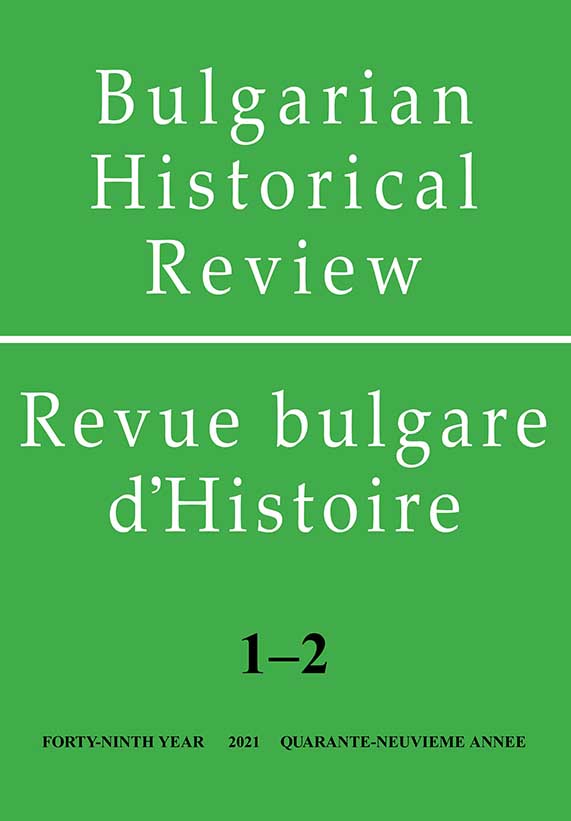
The Story from the attacks against Tsarigrad is composed in Byzantium in the 9th c. and enters in the structure of the Triodion. Probably it is translated into Slavonic language in the beginning of the 14th c. in Athos. It is known for many copies from the 14th – 18th c. Is known a shortened redaction of the Story in two Bulgarian Prologues Church-Historical and Archival Institute No 294 and Church-Historical and Archival Institute No 295. In two manuscripts in Russian State Library collection 247 No 461 and Russian State Library collection 247 No 528 there is another shortened version, different from the already known. So far has not been published or studied. This variant of the Story is an example of the widespread distribution of the writing in the 16th c. The unknown short redaction is an important period in the history of the text and it must to be explicitly explored.
More...
Within the humanities, the study of human potential is one of its main directions, in which the individual appears both as a subject and as an object of study. In this context, an essential element of this direction is the disclosure of the demographic characteristics of society. The clarification of one of them – the specifics of the demographic development of Bulgaria in the period 1878–1912, is the aim of the presented study. Summarizing the analysis of the specifics of the demographic development of Bulgaria in the period from 1878 to 1912, we can conclude that the outlined trends in the dynamics of the main demographic processes and structures, although formed during the period under study, had a lasting impact, influencing the demographic state of the country in the subsequent historical epoch.
More...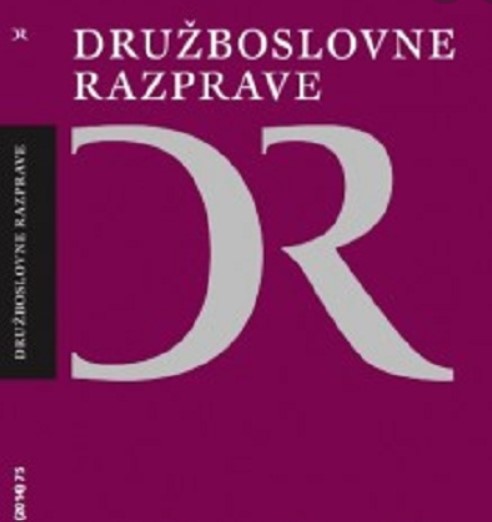
In the first part of the article the author outlines the design and development of Slovenian Public Opinion project (Slovensko javno mnenje - SJM) between 1968-1999. The SJM project is the leading national social survey project and empirical ‘infrastructure’ of Slovenian social sciences. It has developed simultaneously with similar projects in North American and Western European countries (General Social Survey, Allbus). Using longitudinal data from SJM survey, the author outlines general value patterns in Slovenian public, concerning various social, economic and political issues. He focuses on transition of values in the period of political transition, that bears significant importance for Slovenian nation (period of self determination). The paper may be considered a contribution for a history of Slovenian sociology. It contributes to deeper understanding of value changes in Slovenian public in the period of transition from authoritarian regime to democratic political system.
More...
This article studies the Cossacks, a group of people that emerged in the northern steppes of the Black Sea during the fifteenth century. It mainly focuses on the community's political and social effects on the powerful states of the geography, namely Tsarist Russia, Poland, the Crimean Khanate and the Ottoman Empire. After examining the etymology of Cossack and Hetman in the introductory part, it analyzes Don Cossacks’ relations with the Ottomans and the Russian state. Don Cossacks migrated from Russia, where they had a dispute under the leadership of their Hetman Ignat Nekrasov, to the Ottoman lands. Nekrasov's will strictly asked Don Cossacks to protect their identity and beliefs after his death during the period. In this manner, they lived in Anatolia for more than two hundred and fifty years and preserved their language and culture. In the 1960s, they migrated to the USA and Russia due to some customary reasons related to marriage and population decrease. By scrutinizing Don Cossacks' changing contexts, this study aims to draw a framework for the life of the community through the lens of Ottoman documents and Turkish and Russian sources.
More...
This study aims to determine the demographic status of urban nonmuslims of Anatolia in the first half of the sixteenth century. It surveys urban nonmuslims either sharing the same quarters with Muslims or having social and economic relations with the Muslim population. This study's primary sources are the tax registers giving information on socio-demographic aspects like the number of nonmuslim settlements and inhabitants. The article also investigates entitlements and names recorded in the registers to analyze some tendencies towards nonmuslim populations. Thus, it presents that nonmuslim groups had lived in harmony in the Ottoman Empire until the nationalism movements of the nineteenth century.
More...
This article tries to explore the entrance of Bolu-originated-cooks into the imperial kitchens of the Ottoman Empire. It primarily intends to correct conventional wisdom, telling that during Mehmed II's reign, they were first employed in the palace. Understanding that this information comes from only one source and without a reference, the study tries to determine when they enter the kitchen. To this end, it analyzes wage registers, covering some records from the sixteenth to the nineteenth centuries, reflecting the personnel of the imperial kitchen. By this, it claims that it was unlikely to form teams of kitchen-related employees specifically originated from one or more cities until the mid-seventeenth century. Until that time, the staff of the palace kitchens almost entirely originated from Rumelia. It is after that time when this pattern began to change with the personnel coming from Anatolia. Interestingly, this phenomenon also overlaps with the decline of the devşirme system. The rise of the Anatolian cooks in the kitchens continued in the eighteenth century and some city-based clusters emerged. In the first decades of the nineteenth century, most of the kitchen stuff was from Nevşehir. However, there is no sign of Bolu originated people between 1814 and 1826. After the abolishment of the Janissary corps, cooks from central Bolu, Dörtdivan, Çarşamba (Seben) were intensively present in the royal kitchens. The article shows that these rising employment rates were related to their well-known culinary skills in Istanbul's elite circles.
More...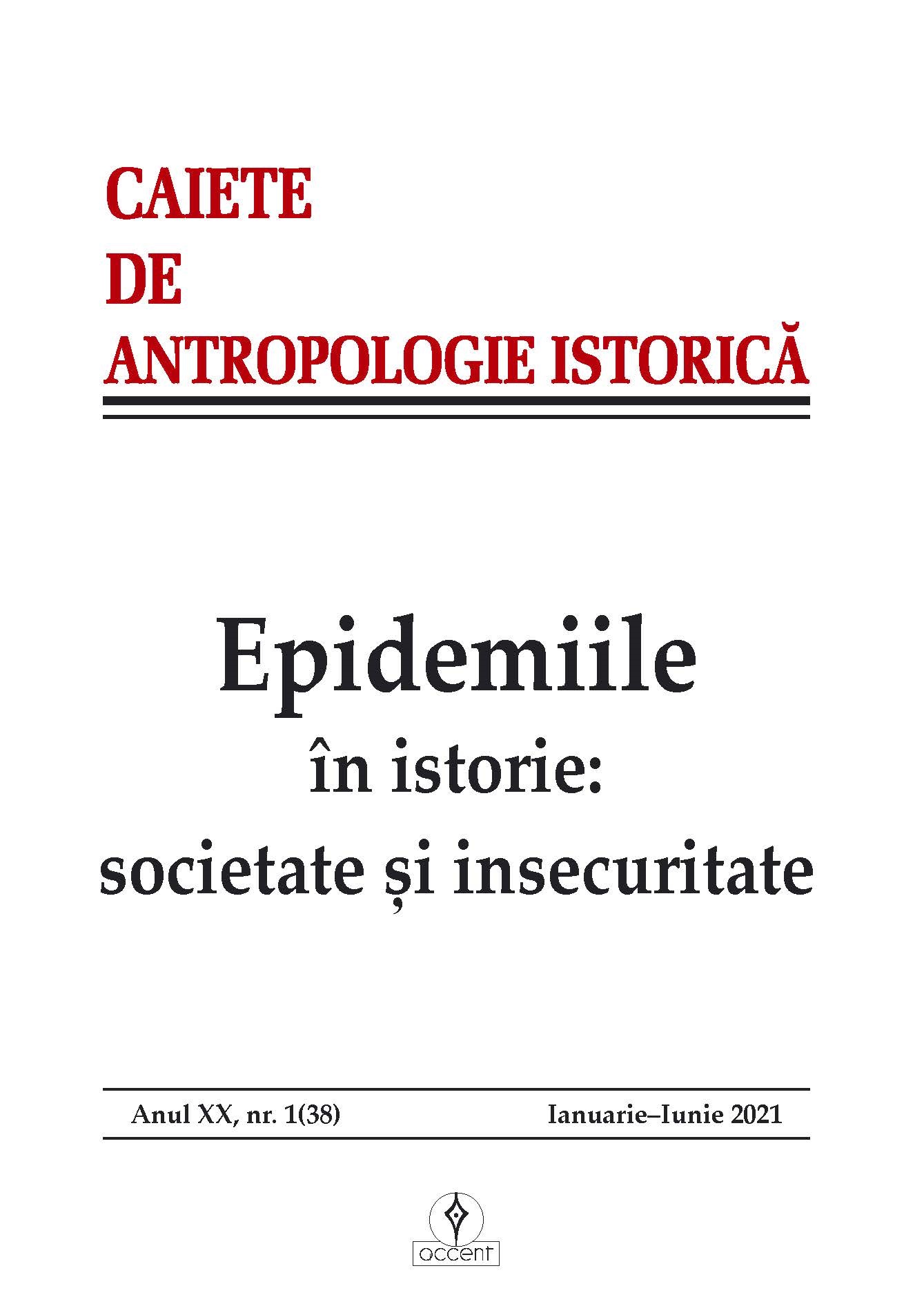
The plague, “this great figure of the past,” in the words of historian Bartholomew Bennassar, was one of the most threatening calamities to befall human communities. On the scale of the European continent, the plague manifested itself over a cycle of about four centuries (from the black plague of the fourteenth century to the beginning and middle of the eighteenth century, for Western Europe, and the first decades of the nineteenth century, for the space of Eastern Europe). According to experts, the plague had the worst demographic consequences in pre-industrial societies, killing a third or, according to some statistical estimates, half of European populations. The scourge was caused by a bacillus, Yarsinia pestis, named after the French doctor Alexandre Yarsin, who discovered it in the laboratory at the end of the 19th century. The most common was bubonic plague, with a mortality of about 70–80%, among the contaminated cases, while septic and pulmonary plague reached a mortality rate of 100%. All episodes of the plague were accompanied by other misfortunes, such as collective panic, famine, wars, social violence: robberies, abuses, crimes and arson. Western society succeeded in eradicating the plague on the European continent in the early 18th century, benefiting from advances in the medical sciences, more effective hygiene and treatment measures. The plague haunted the center and southeast of the continent until the third decade of the nineteenth century. Heterogeneous environments, marked by the most diverse beliefs and superstitions, were crossed by panic of proportions, due to the large number of victims. Ecclesiastical and secular discourses showed visions of the causes and consequences of plague epidemics. A series of chroniclers and chroniclers left descriptions, more or less consistent, about the terrible manifestations of the plague in Transylvania and the Romanian Lands. The collective memory has preserved the memory of this scourge in a series of names of places which recall the confrontation with this terrible epidemic.
More...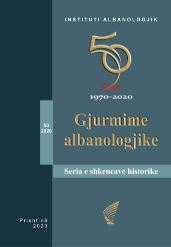
One of the wars that happened between 1915-1916 is the Battle of Çanakkale, which is also known as the Battle of Gallipoli. As it is known, in this war in one side were England, France, Russia, and in the other side there were the Ottoman Empire, Austro-Hungary, and Germany. One of the most important facts for our research is that many people of different nationalities from different countries of the world participated voluntarily in this war in the side of the Ottoman Empire, Austro-Hungary, and Germany. Among the volunteers who responded positively to the call and participated in this war were the peoples of the Balkans, especially from places that were part of the Ottoman Empire. The Balkans and Albanians who were part of the Ottoman Empire till 1912, and even though Albanians were not part of the Ottoman Empire any more after that year, they were among volunteers who answered the call for war participation. Although more than 100 years have passed since the war has happened, still this war exists in the memory of Albanians. One of the reasons why this war still exists in the memory of Albanians is the folklore aspect and its impact. Even nowadays songs about Çanakkale continue to be created by composers and singers, and due to this fact they are transmitted from generation to generation and always kept in the memory of people. In this study, we will investigate how this war is perceived by Albanians in folklore today, whether this war is presented in the history textbooks of Albanians, and whether this war is included in the academic work of Albanian writers. In this study it will be answered to many questions, and some of these questions are as follows: whether there is a difference in perception between the public (usual people) and intellectuals regarding the Battle of Çanakkale during and after communism. If there is a difference, what are the reasons for it? And on the other side, why this war still exists in folklore? The methods that will be used in this research are comparative and analytical methods, and the sources used to support the study are songs about the Battle of Çanakkale sung by Albanian singers, and the textbooks and published studies in Kosovo’s scientific journals.
More...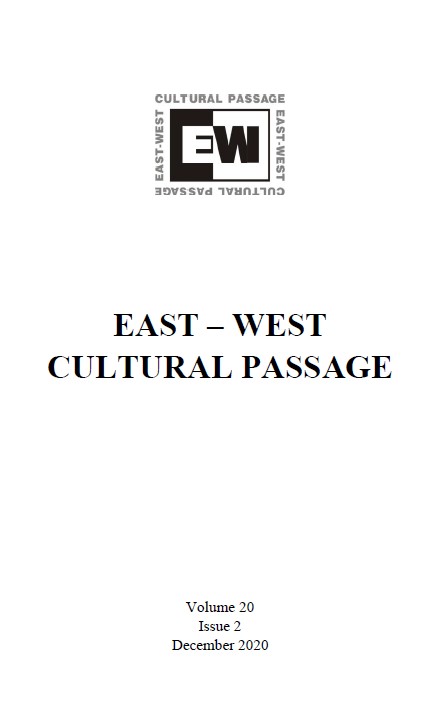
In the first half of the twentieth century, immigrants left oral and written testimonies of their experience in the United States, many of them housed in various ethnic-American archives or published by ethnic historical societies. In 1942, the Yiddish Scientific Institute in New York City encouraged Jewish-American immigrants to share their life stories as part of a written essay contest. In 2006, several of these autobiographical accounts were translated and published by Jocelyn Cohen and Daniel Soyer in a volume entitled My Future Is in America. Thus, this essay examines the autobiographies of two Jewish-American immigrant women, Minnie Goldstein and Rose Schoenfeld, with a view to comparing how their gendered identity (as women and as members of their families) has impacted their choices and lives in their home countries and in the United States in the first part of the twentieth century.
More...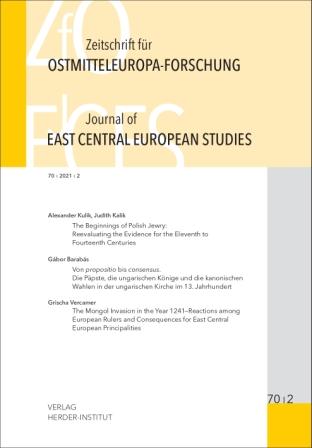
This article reexamines the evidence of Jewish presence in Poland from the eleventh to the fourteenth centuries in connection with problems of origins, periodization, and localization of Jewish settlement in Poland. It deals inter alia with questions regarding the balance between Jewish and Christian evidence, as well as with reports of Jewish presence from neighboring areas of Eastern Europe such as Kievan Rus’. The reevaluation of evidence on medieval Polish Jews helps to illuminate the origins of eastern Ashkenazi Jewry, as well as to clarify diverse aspects of the history of early Eastern Europe. Thus, for example, among the most important general conclusions is the lack of continuity across three waves of Jewish migration and settlement in Poland. Since most Polish Jews were descendants of the third wave of Jewish migration into Poland, there is little doubt that the vast majority of them came from Germany and Bohemia, mostly via Silesia. We can also reliably conjecture that the Jewish population of southwestern Rus’—whatever its origins (possibly also at least partially Ashkenazi) and size (possibly reduced by the Mongol conquest)— came to be integrated with immigrants from the west due to the eastward expansion of Lithuania and Poland during the thirteenth and fourteenth centuries. Thus, most modern Ashkenazi Jewry must go back to the melding of these two communities.
More...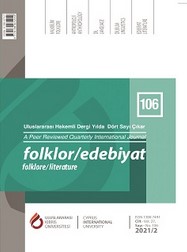
Magic Seeds is a work of fiction, but it also serves as a reflection of the real world, the history of India, where value judgments in a society return to their starting point only by reforming in accordance with the reconstruction of a given society. Willie, who is in search of identity and a home, finds the remedy in joining the guerrilla order. However, here, he fights through the shadow of the past, which he can never escape. The shadow of the past is the hierarchy itself, and this article explores the never-ending transformation of hierarchy, anarchism, and the search for order through the novel Magic Seeds. This article is a comparative study of the novel Magic Seeds, and history, the Naxalite movement in India from the 1960s until the early 2000s. Through the historical revolutionary Naxalite movement and a political association of the Marxist–Leninist Communist Party of India in West Bengal in 1960s, this study also reveals why an anarchic movement apparently returns to its starting point, and legs behind the decolonization or reconstruction of a society due to the deep-rooted and pre-structured hierarchy in a society by considering the terms humanization, dehumanization, hierarchy, cast system, anarchism, transformation and reconstruction.
More...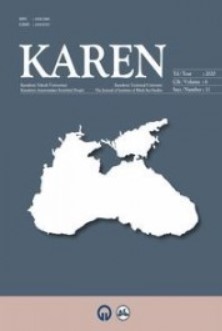
The captivity years of Artvin and its liberation from enemy occupation is different from other provinces which were occupied by enemies. Despite the fact that these events took place a short time ago, this situation has been overlooked by researchers. While investigating the occupation and liberation of cities, firstly, the cities should be classified as cities occupied before the Armistice of Mudros and cities occupied after the Armistice of Mudros. Secondly, cities should be categorized as the cities which achieved their liberation through their local communities’ own struggles against enemies with the help of the Grand National Assembly and the cities which were liberated by the Turkish Army. However, Artvin cannot be classified into either of these categories because the residents of Artvin, who lived in captivity for fortytwo years, never broke their ties with their motherland. Firstly, they formed militia forces and fought against the Russians. Secondly, some of them stood by the members of the Special Organization (Teşkilat-ı Mahsusa), who were operating against the Russians in the region. Thirdly, some residents provided moral and material support including human resources for the Turkish Army in the region regardless. Furthermore, the residents of Artvin sent their children of military draft age to almost every front where the Turkish Army fought both in World War I and the Turkish War of Independence. The number of people from Artvin province who become martyr in these fronts was 225 according to the Ministry of Defense. According to the data obtained, this study deals with the political, social and economic situation in Artvin from the '93 war (1877-1878 Ottoman-Russian War) until the period of famine which broke out in 1930, which affected the whole world, and it was seen that despite all the difficult conditions, the residents of Artvin province made every sacrifice they could in order not to be left out of Turkey.
More...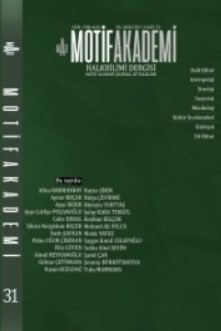
Children’s magazine that is agemate with the Turkish press is important not only for the history of childhood but also the social history. Even though they play a role in the modernization project, state-building, children's literature, or education, children's magazines do not draw attention enough by the academic researchers. The aim of this study is to examine the history of children’s magazines published through 150 years, and to reveal changing the image of children via this magazines. Revealing the ideologies and values transferred over children’s magazines gives information regarding what kind of child image wanted to be created/built in this process. For this purpose, this study cronologically evaluates the history of transformation of children’s magazines in time and present a panaromic view from 19th century to 21st century. The study examine the children’s magazines in the historical process in paralell with political, economic and socio-culturel changes that Turkey underwent. Starting from the Ottoman era, the study evaluate the children’s magazines regarding the determined periods as ‘early-single party periods’, ‘after 1950’s multi party system’ and ‘after 1980’s’ with a complementary point of view. Literature survey is used for the study. The study, following the values and ideologies transferred by the magazines, reveals that the image of child transformed from ideal-citizen child to consumer child.
More...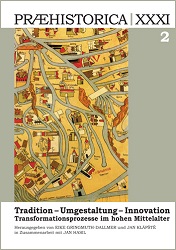
The separation of the original core of the town of Opava, founded between 1213 and 1220, into plots was adapted to the communication scheme of the earlier settlement. Within the development of the town in the second half of the 13th century, regularly measured-out blocks of houses were built in the southern part of the town. Archeologically, the development of the land subdivision and buildings may be observed by means of the finds of fences and sunken basements of wood-and-clay buildings, which dominated among the buildings of the early town. Around the turn of the 14th century, we encounter the earliest known evidence of stone chambers (‘Steinwerk’), built at the place or earlier basements of wood-and-clay buildings, which were in the course of the 15th and 16th centuries integrated into the new stone buildings covering the entire width of the plots all to way to the street line. It is also characteristic for the period of the 13th and 14th centuries that the terrain in the area of the plots as well as in public spaces was significantly raised, which was mainly caused by the deposition of soil from the construction pits for house basements and waste disposal in their immediate vicinity. From the second half of the 13th century, the sanitary situation of the town was improved by the gradual spread of wooden-constructed waste pits, whereas medieval wells have been recorded only sporadically.
More...
Defining the ethnic belonging of Aromanians from Albania is an especially complex issue. Although there are many names used to designate its members (Vlachs, Vlahi, Tsintsari, Koutzo-Vlachs, Arvanitovlahi, llatsi-fatsi etc.), this ethnic group is very hard to study separately from the Albanian majority. Since May 9th 1905, when the Ottomans gave the Vlachs in the Empire the right to have religious services and schools in their maternal language, the Aromanians’ identity swirled around this religion-language axis. The irony is that their identity chaos is rooted in that same acknowledgement. Although recognized, in October 2017, as an ethnic minority in Albania, some of the Aromanians are against this decision, seeing it as an attempt to single them out from the Albanians. We used a questionnaire to try and assess how the Aromanians identify themselves, especially after 100 years of living with the Albanian majority. The idea was to see if there was a correlation between the subjects’ educational level and their knowledge regarding Romania’s role in supporting the Aromanians in the Balkans. The denial of Aromanians’ fundamental rights during the Communist dictatorial regime, such as learning their maternal language or free practice of their religion, accentuated their cultural identity crisis and resulted in almost complete obliteration of the characteristics which set them apart from the majority.
More...